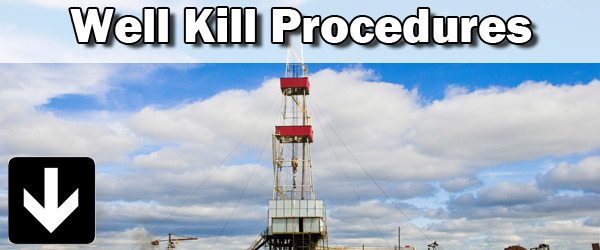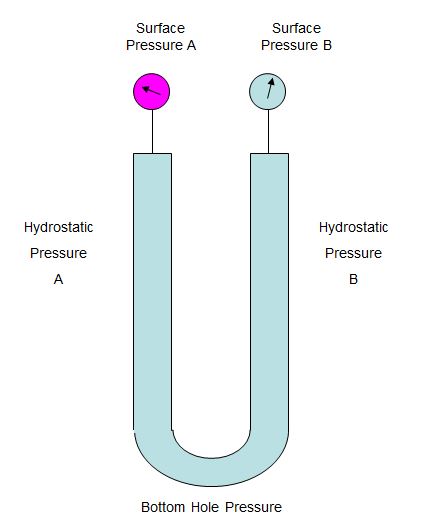Well Killing Procedure
Quiz-summary
0 of 20 questions completed
Questions:
- 1
- 2
- 3
- 4
- 5
- 6
- 7
- 8
- 9
- 10
- 11
- 12
- 13
- 14
- 15
- 16
- 17
- 18
- 19
- 20
Information
In well control operation, there are several methods to kill the well which will be performed depending on the well situation. In several occasions, the circulation can be performed; you can do typical well kill procedures as driller’s method or engineering methods. However, there are few cases when the circulation is not possible, you may need to kill the well with other methods. Therefore, this quiz will help you learn about well kill procedures in well control. In this test, there are a total of 20 quizzes relating to well killing procedures. Please take time to do the quiz.

You have already completed the quiz before. Hence you can not start it again.
Quiz is loading...
You must sign in or sign up to start the quiz.
You have to finish following quiz, to start this quiz:
Results
0 of 20 questions answered correctly
Your time:
Time has elapsed
You have reached 0 of 0 points, (0)
Categories
- Not categorized 0%
- 1
- 2
- 3
- 4
- 5
- 6
- 7
- 8
- 9
- 10
- 11
- 12
- 13
- 14
- 15
- 16
- 17
- 18
- 19
- 20
- Answered
- Review
-
Question 1 of 20
1. Question
Which well kill method does not require circulation?
Correct
Incorrect
-
Question 2 of 20
2. Question
Which well kill procedure will not maintain bottom hole pressure
Correct
Incorrect
-
Question 3 of 20
3. Question
What does this formula (0.052 x Mud Weight x True Vertical Depth) represent?
Correct
Incorrect
-
Question 4 of 20
4. Question
Which is the correct U-Tube equation from the following?
 Correct
Correct
Incorrect
-
Question 5 of 20
5. Question
For the following parameters, calculate the Hydrostatic pressure head.
Well vertical depth = 9,000 ft TVD
Mud weight = 12.0
Pressured sand with a reservoir pressure = 6,500 PSI @ 9,000 FT TVD
What is kill weight mud required for this case?
Correct
Kill weight mud = 6,500 ÷ (0.052 x 9,000) = 13.9 ppg
Incorrect
Kill weight mud = 6,500 ÷ (0.052 x 9,000) = 13.9 ppg
-
Question 6 of 20
6. Question
How many circulations of the drilling fluid are required in Driller’s method of well control?
Correct
Incorrect
-
Question 7 of 20
7. Question
Which is the correct statement about the Driller’s method from the following?
Correct
Incorrect
-
Question 8 of 20
8. Question
How many circulations of the drilling fluid are required in Engineer’s method (wait and weight) of well control?
Correct
Incorrect
-
Question 9 of 20
9. Question
Fill in the blank for the following statement about wait and weight of well control method. Whenever the pump speed is increased or decreased, (including start-up and shutdown) the casing pressure must be held ______ at the value it had immediately before the pump speed change was initiated.
Correct
Incorrect
-
Question 10 of 20
10. Question
The following table shows sample drillpipe pressure schedule for the wait and weight method:

From the following, which is the correct statement about the above table?
Correct
Incorrect
-
Question 11 of 20
11. Question
What is the Final Circulating Pressure (FCP)?
SIDPP = 400 psi
Well depth = 10,000’ MD/ 9,000’TVD
Current MW = 11.0 ppg
SCR = 500 psi
Correct
KWM = 400 ÷ (0.052 x 9,000) + 11.0 = 11.9 ppg
FCP = 500 x (11.9 ÷11.0) = 541 psi
Incorrect
KWM = 400 ÷ (0.052 x 9,000) + 11.0 = 11.9 ppg
FCP = 500 x (11.9 ÷11.0) = 541 psi
-
Question 12 of 20
12. Question
Which statement is true from the following for both Driller and Engineer’s method of well control?
Correct
Incorrect
-
Question 13 of 20
13. Question
Which one from the following are the advantages of Driller’s method of well control?
Correct
Incorrect
-
Question 14 of 20
14. Question
Which one from the following are the advantages of Engineer’s method (wait and weight) of well control?
Correct
Incorrect
-
Question 15 of 20
15. Question
When the circulation is impossible and the gas migrates up the hole, which method is used to control the well?
Correct
Incorrect
-
Question 16 of 20
16. Question
Which method of well control is not recommended by operators and drilling contractors?
Correct
Incorrect
-
Question 17 of 20
17. Question
When shall bullheading be considered from the following situations?
Correct
Incorrect
-
Question 18 of 20
18. Question
Is this statement true or false? – “There is a chance that bullheading could breakdown the formation at the shoe rather than at the producing formation especially when the open hole section is very long beyond the last casing shoe.”
Correct
Incorrect
-
Question 19 of 20
19. Question
The following are the indicators for Underground blowout EXCEPT?
Correct
Incorrect
-
Question 20 of 20
20. Question
For which purpose, barite plug, which consists of barite, water, lignosulfonate and caustic soda, is used?
Correct
Incorrect
Leaderboard: Well Killing Procedure
| Pos. | Name | Entered on | Points | Result |
|---|---|---|---|---|
| Table is loading | ||||
| No data available | ||||



